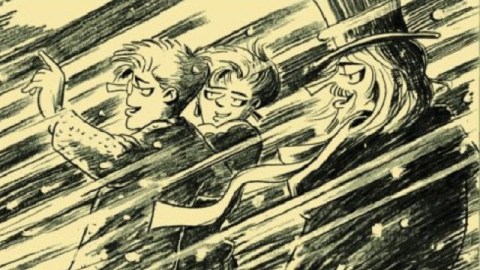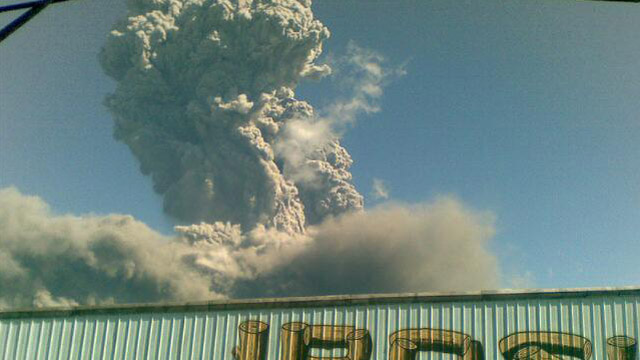Room for Hope: The Art of G.B. Trudeau’s Doonesbury

“Satire works by inference,” cartoonist G.B. Trudeau says in Brian Walker’s new book Doonesbury and the Art of G.B. Trudeau. “What you condemn should reveal what you value, what you stand for. That’s why I don’t like categoric, 360-degree attacks. Scorched-earth artists leave no room for hope.” Since its debut on October 26, 1970, Doonesbury has attracted devotees as well as devoted critics with Trudeau’s heart-on-his-sleeve liberalism. Walker walks through the evolution of the Doonesbury, which began in 28 newspapers and now boasts 100 million daily readers, and gives not a biography of Trudeau but rather a biography of the life of the strip itself. Despite all the wars—cultural and shooting—of the past four decades, Trudeau never forgot to leave room for hope, and Walker’s affectionate tribute reminds us of that crowning achievement of his art.
Walker begins by recounting the standard lore of Doonesbury. The name itself came from combining “doone” (Yale “slang for a well-meaning fool”) with the last part of Charles Pillsbury’s name (Pillsbury being both heir to the flour fortune and Trudeau’s former Yale roommate). Trudeau modeled several characters after real-life people, including B.D. after Yale QB Brian Dowling, Mark after activist Mark Rudd, and Duke after original gonzo journalistHunter S. Thompson. Begun as an account of the trials and tribulations of Ivy Leaguers facing the challenges of the late 1960s, Doonesbury kept pace with the times and took on a litany of issues. “Among the many issues [Trudeau] explored during the first decade of Doonesbury,” Walker writes, “were women’s liberation, the war in Vietnam, communal living, media exploitation, presidential elections, class warfare, drug use, the energy crisis, homosexuality, rock and roll, political corruption, suntanning, higher education, organized crime, religion, physical fitness, the environment, and natural childbirth.” Trudeau didn’t just touch a nerve with these issues—he danced a jig on them, and made them the raw material for his comic in a way that made the comics page of newspapers relevant and timely in a way that The Family Circus and its kind never did.
Trudeau takes heat for being an unashamed liberal, which in our current climate usually morphs into “anti-troops” attacks. Not only did Trudeau send B.D. into Vietnam, he later sent him to the Gulf War and the current War in Iraq. In 1990, Trudeau traveled to the Gulf to meet and talk with soldiers to better understand their experience and reflect that experience in his work. When America and B.D. returned to the region in 2003, Trudeau took the extraordinary step of having his character lose a leg in combat. “So began the eight-month tale of B.D.’s rescue, evacuation, recuperation, and eventual return to his family,” Walker explains. Within days of B.D.’s fictional tragedy, real-life personnel at the Department of Defense offered to help Trudeau research the reality of such trauma. Two years later, B.D. first remembers the details of the attack during a counseling session for his post-traumatic stress disorder. B.D.’s tale touched the lives of so many struggling with the same issues and elevated Doonesbury beyond simply entertainment to actual public service. In 2006, Trudeau introduced The Sandbox—a blog on his website featuring entries from real-life soldiers in the theater of war. Walker fully presents this important link between Trudeau and his most loyal, and often disregarded, audience.
The generous selection of original art and finished strips provides a perfect “greatest hits” backdrop for Walker’s text. Every era and every memorable moment appears, making this the ideal “scrapbook” for the Doonesbury aficionado. Rare and sometimes unpublished artwork adds another dimension to Trudeau’s art, such as a drawing of several characters hailing a cab during a snowstorm (shown above) created for a concert remembering the late singer Harry Chapin, who had been a friend of the cartoonist. Artwork for other projects, such as the animated film and musical versions of the strip as well as board games and other promotions, demonstrates how much of a phenomenon Doonesbury was and continues to be in the digital age with its ever-growing web presence.
Walker, who served as curator for a 1983 retrospective of Trudeau’s work at the Museum of Comic Art, knows the artistic side of Doonesbury better than anyone. He ably negotiates the controversy of whether and how much Trudeau draws the comic by bringing collaborators Don Carleton, George Corsillo, and David Stanford out of the shadows. “After years of absorbing the blame for the drawing in Doonesbury,” Trudeau protested in 1991 in response to claims that these collaborators did all the work, “it’s odd to wake up one day and find myself stripped of the credit.” Reproductions of Trudeau’s pencils side-by-side with Carleton’s inked versions should lay to rest that controversy once and for all.
The fact that Walker knows the artistic side of Trudeau better than anyone makes the few fine art asides in this book so tantalizing. Trudeau acknowledges his debts to Jules Feiffer, Charles Schulz, and even MAD Magazine, but Walker doesn’t probe those deeply enough for me, especially how Feiffer’s minimalism heavily influence the pre-1982 sabbatical look of the comic. When Trudeau took the post-sabbatical strip in a more artistic direction by employing silhouettes, chiaroscuro, and cinematic effects, he revealed an “artsy” side previously repressed. Walker does a good job cataloging these changes, but I wish he would tap into Trudeau’s hidden fine art background more. A “mash-up” drawing of images copied from Goya from Trudeau’s college days tantalizes us with the possibility of more, but more often than not the book echoes TIME Magazine’s 1976 characterization of Trudeau as “a Hogarth in a hurry.” If Trudeau shares aesthetic traits with Goya and Hogarth as much as their clear-eyed view of human frailty and cruelty, evidence of that remains to be seen, but still hoped for.
“I was years into it before I understood I’d found my life’s work,” Trudeau confesses to Walker. “After all, I was being paid to stand on a corner firing spitballs at the passing parade. I worked erratic hours, and there was no dress code. It didn’t seem like an actual job.” Although Doonesbury remains Trudeau’s life’s work, he’s never let the parade of humanity pass him by. His characters began in communes in the Age of Aquarius and now “tweet” in the Age of Terror, never missing a beat while measuring the pulse of America. As cynical as the climate gets, Trudeau never indulges in it. He surfs each wave of despair and rides it to another glimmer of humor and hope. Brian Walker’s Doonesbury and the Art of G.B. Trudeau looks back at Trudeau’s legacy and gives hope that the best—for the cartoonist and for us—is yet to come.
[Many thanks to Yale University Press for providing me with a review copy of Doonesbury and the Art of G.B. Trudeau by Brian Walker.]





